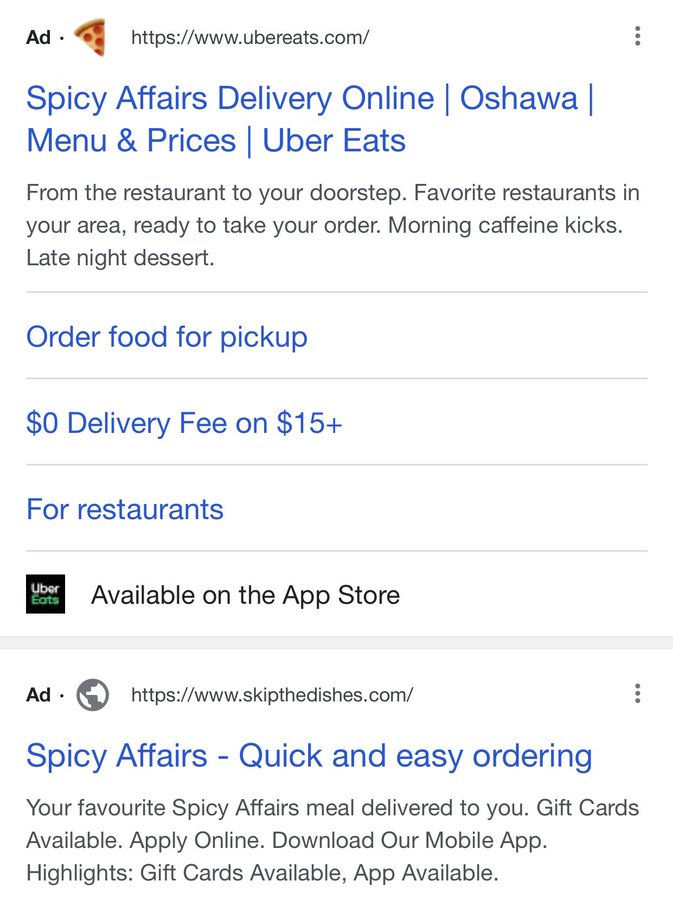Google tests (once again) emojis and favicons among Ads results
At the moment it is just a small experiment, as confirmed by the public voices of the company, but it can give an idea of the direction that the colossus intends to take: Google Ads returns to show favicons and emojis among the textual resultsappearing in SERP, so as to help users to identify an advertiser more easily and to distinguish it from competitors.
Favicons in Google Ads URLs
The experiment was noted by some international experts and, in particular, by Darcy Burk, founder and CEO of Burk Digital Factory, who noticed a different ad inside the Google SERP.
As you can see from the image via twitter, next to the indication Ad. in bold that identifies the ad and before the URL of the site there is the image of a slice of pizza, a product that identifies the core business of Uber Eats, the well-known online food ordering and delivery platform. It is unclear whether this image represents precisely a favicon (as various observers claim) or an emoji, but it has intrigued the presence of a visual image within a Google Ads text ad.
A test to simplify the choice of users
Soon after, always via twitter came the official confirmation of Google, which through the Ads Product Liaison Ginny Marvin revealed that the image is part of a wider experiment of Google, which is testing different solutions “to help users more easily identify the brand or advertiser associated with the search network ads that they might see for a given query”.
In fact, the small colored image of the pizza definitely catches the eye, much more than the generic and black and white favicon that appears next to the URL in the second insertion of the previous example, but at the moment it is not clear and it has not been explained how Uber Eats got that emoji in its Google ad, nor do we know at the moment if this feature will become available for more, or even all, Google Ads advertisers in the future.
Emojis in Ads, between guidelines and experiments
Beyond the validity of the experiment, in order to judge which of course it will be necessary to evaluate the effectiveness in terms of actual clicks on the result, Many have shown surprise for the presence of the image in the text ad for the old controversies related to emojis.
These images, in fact, are considered interesting for digital marketing, but are present in the list of “invalid or unsupported characters” according to the document of the Google Advertising Guidelines, although this did not prevent the same company opening several times to their use in URL ads in recent years. For example, Barry Schwartz recalls that there were examples of emojis in Google Ads in 2020, 2019, 2017 and 2016, although in all these cases it was not Google who added them but the advertiser company (and this clearly created confusion and disparity among SERPs).
A new tool to catch the eye
What changes compared to the past, therefore, is that Google now thinks it is worth testing the insertion of emojis or favicons in advertisements of the Ads system, thus exploiting the communicative power of images.
In fact, as said and as easily visible, the text ad of Uber Eats of the example shown certainly has a different impact than that of the competitor, because the visual element – However small – it is a tool that allows to capture the attention of researchers. It remains to be seen whether Google will open the test to other advertisers, queries and markets and whether it will eventually open (again) the opportunity to use emojis more freely.


